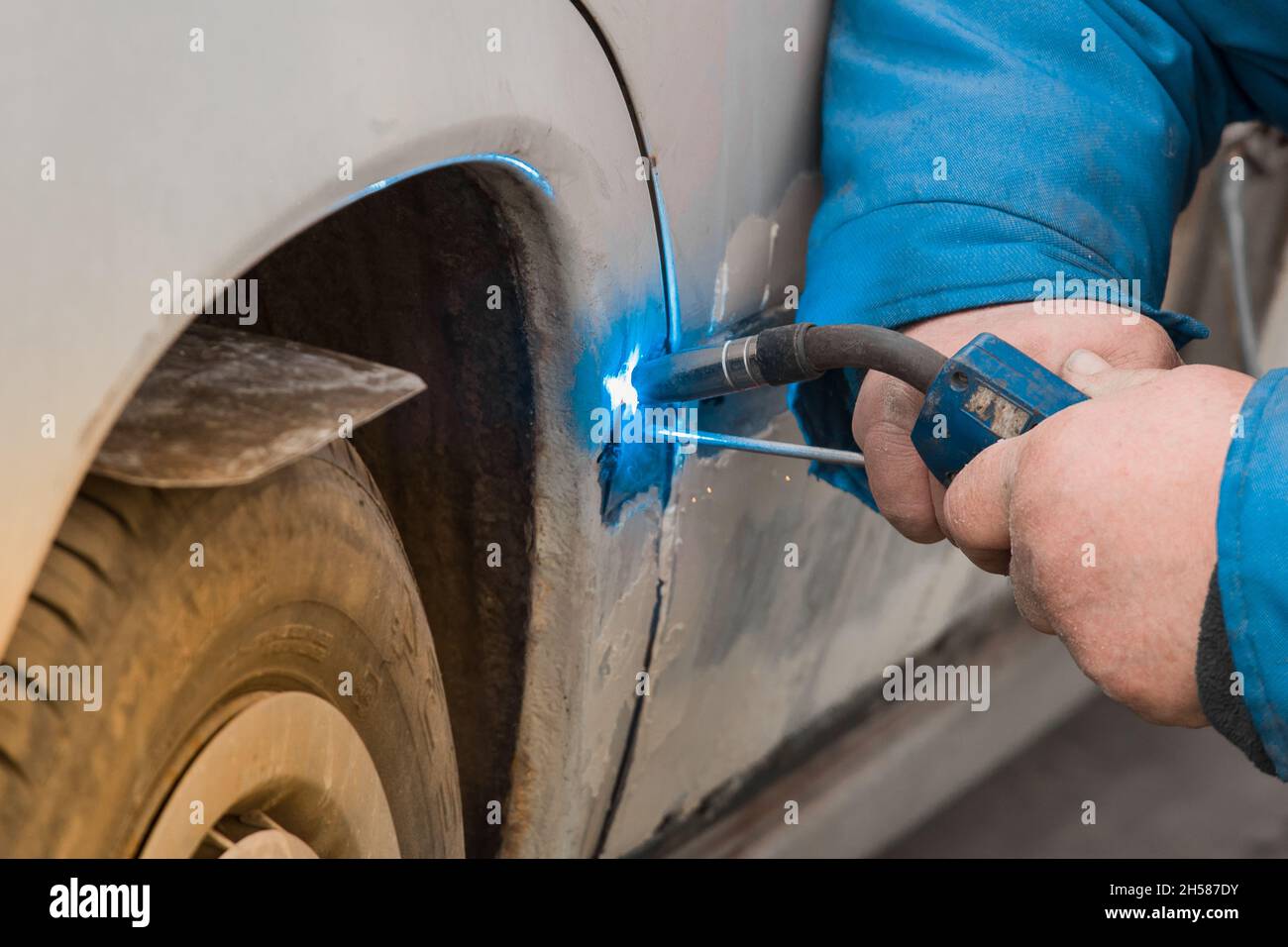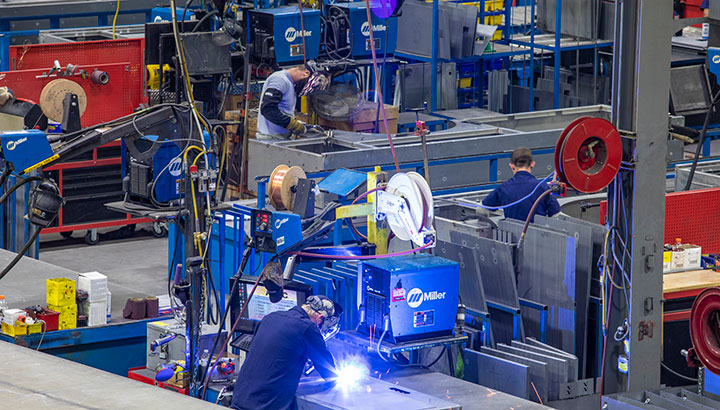Common Welding Repair Issues and Exactly How to Address Them Effectively
Welding fixings commonly come across a variety of problems that can endanger the stability of the last product. Typical problems consist of insufficient penetration, porosity, and misalignment, amongst others. Each defect provides special challenges that call for details techniques for resolution. Comprehending these problems is essential for welders intending to boost their abilities and outcomes. This discussion will explore these common welding repair work concerns and efficient approaches to address them.
Poor Penetration
Poor infiltration takes place when the weld steel fails to completely fuse with the base product, resulting in weak joints and possible architectural failures. This issue usually originates from inadequate warmth input, inaccurate electrode angle, or inappropriate welding speed. Welders might come across poor penetration due to a mistake of the necessary criteria for a particular product density or kind. Additionally, contamination on the base product's surface area can hinder effective bonding, exacerbating the trouble. To address poor infiltration, welders need to assure proper setups on their tools and maintain a tidy job surface. Regular inspection of welds is advised to identify any shortages early, permitting timely modifications and the avoidance of compromised architectural integrity in bonded assemblies.
Porosity
Porosity is an usual issue in welded joints that shows up as tiny gas bubbles trapped within the weld steel. This defect can compromise the honesty of the weld, resulting in reduced strength and possible failure under stress and anxiety. Welding. Porosity usually occurs from contamination, moisture, or improper welding strategies, which enable gases to leave into the liquified weld swimming pool. To address porosity, welders ought to assure correct surface area preparation, maintain a tidy working setting, and utilize ideal welding criteria. In addition, choosing the appropriate filler product and protecting gas can mitigate gas entrapment. Routine evaluation and testing of welds can help identify porosity early, assuring prompt restorative activities are taken, thereby maintaining the high quality and dependability of the bonded structure
Misalignment
Misalignment in welding can occur from numerous aspects, consisting of improper configuration and thermal growth. Recognizing the source is necessary for efficient resolution. Several improvement techniques are available to straighten elements and assure architectural integrity.
Sources of Imbalance
Welding imbalance commonly stems from a selection of underlying problems that can jeopardize architectural stability. One key reason is incorrect fit-up of elements prior to welding, which can cause gaps and irregular surfaces. Variations in thermal expansion during the welding process can also result in distortion, particularly if the materials being joined have different coefficients of expansion. In addition, poor fixturing and clamping might fall short to hold parts safely in position, bring about motion throughout welding. Improperly maintained tools, including welding equipments and tools, might introduce disparities in the weld grain, further contributing to misalignment. Ultimately, driver error, coming from inadequate training or experience, can also play a substantial function in producing misaligned welds.
Correction Techniques Readily Available
Dealing with misalignment efficiently calls for a mix of corrective techniques tailored to the particular concerns handy. One common method is making use of fixtures or jigs to hold components in the right position during welding, making sure regular placement. Furthermore, preheating the materials can help in reducing distortion and boost fit-up. For substantial misalignment, mechanical adjustment methods, such as utilizing hydraulic jacks or clamps, can be employed to correct the setting before welding. Post-weld warm therapy might additionally be essential to relieve anxieties caused by misalignment. Lastly, mindful assessment and change during the arrangement phase can protect against imbalance concerns from becoming significant issues, advertising a smoother welding procedure and enhancing overall architectural integrity.
Distortion
Distortion is a typical challenge in welding that can emerge from different aspects, consisting of uneven cooling and heating. Recognizing the causes of distortion is crucial for executing effective prevention techniques. Addressing this issue not only enhances architectural integrity but also enhances the general quality of the weld.
Reasons for Distortion
When subjected to the extreme heat of welding, products typically undertake modifications that can lead to distortion. This phenomenon mostly develops from thermal expansion and contraction during the welding process. As the weld area warms up, the material broadens; upon air conditioning, it acquires, which can develop inner stress and anxieties. Additionally, uneven home heating across a work surface can worsen these stress and anxieties, causing bending or flexing. The sort of material additionally plays a considerable function; steels with differing thermal conductivity and coefficients of development might respond in a different way, bring about uncertain distortions. Poor joint style and insufficient fixturing can add to imbalance throughout welding, raising the probability of distortion. Understanding these causes is necessary for efficient welding repair service and avoidance methods.
Prevention Techniques
Reliable prevention methods for distortion throughout welding concentrate on regulating heat input and ensuring proper joint layout. Maintaining a regular warm input helps to minimize thermal expansion and tightening, which can lead to distortion. Making use of methods such as preheating the workpiece can likewise reduce the temperature level slope, advertising uniform heating. Furthermore, picking proper joint layouts, such as T-joints or lap joints, can improve security and minimize stress concentrations. Carrying out correct fixturing to protect the workpieces in position even more aids in preserving alignment throughout the welding procedure. Staggered welding series can disperse heat a lot more equally, preventing local distortion. By using these techniques, welders can significantly decrease the probability of distortion and boost the total high quality of their welds.
Breaking
Breaking is an usual problem encountered in welding repairs, usually resulting from numerous variables such as inappropriate air conditioning rates, product choice, or insufficient joint preparation. The incident of splits can greatly jeopardize the stability of the weld, bring about possible failings during operation. To address this problem, welders need to first assess the origin, guaranteeing that products are compatible and appropriately selected for the details application. In addition, controlling the air conditioning price during the welding process is crucial; fast cooling can generate tension and result he has a good point in cracking. Appropriate joint design and prep work likewise add to minimizing the threat. Executing these approaches can enhance weld top quality and longevity, inevitably lowering the likelihood of fracturing in ended up weldments.

Incomplete Blend
A considerable problem in welding repairs is insufficient blend, which takes place when the weld metal does not effectively bond with the base product or previous weld passes - Montana Mobile Welding and Repair Belgrade Fabrication. This flaw can cause weaknesses in the joint, potentially endangering the stability of the welded structure. Aspects adding to insufficient blend consist of inadequate warmth input, inappropriate welding method, and contamination of the surfaces being signed up with. To address this problem efficiently, welders need to assure proper pre-weld cleaning and surface area preparation, in addition to adjust their welding parameters to achieve adequate infiltration and combination. Regular evaluation during the welding procedure can likewise assist determine incomplete blend early, permitting prompt rehabilitative measures to improve the general quality of the weld
Overheating
While welding fixings can boost structural stability, overheating offers a significant difficulty that can result in product destruction. Excessive warmth during welding can modify the mechanical homes of steels, causing decreased stamina, raised brittleness, and bending. This phenomenon is specifically crucial in high-stress applications where structural dependability is paramount. Determining overheating can include aesthetic examinations for discoloration or distortion, along with checking temperature throughout the welding process. To reduce the risks connected with overheating, welders need to employ ideal techniques, such as managing warm input, changing travel speed, and utilizing appropriate filler materials. In addition, carrying out pre- and post-weld heat therapies can assist recover product homes and improve the overall top quality of the repair work, making certain lasting performance and safety.
Often Asked Inquiries
What Are the Usual Indicators of a Welding Problem?

Just How Can I Evaluate My Welds for High quality?
To test welds for top quality, one can utilize visual examinations, ultrasonic testing, and radiographic approaches. Each method guarantees structural honesty, recognizes issues, and validates adherence to specified standards, ultimately boosting the reliability of the welded joints.
What Security Preventative Measures Should I Take While Welding?
When welding, one must focus on safety and security by using suitable personal protective devices, guaranteeing appropriate air flow, securing combustible materials away, maintaining a tidy work area, and recognizing environments to protect against crashes and injuries.
Can I Fix a Weld Without Remodeling the Entire Joint?
Fixing a weld without redesigning the whole joint check that is feasible, relying on the damage (Montana Mobile Welding and Repair Belgrade). Methods such as grinding, adding filler product, or using a welding process can properly deal with details problems while preserving the bordering structure
What Tools Are Crucial for Reliable Welding Fixes?
Essential tools for effective welding repair work include a welding device, cord brush, mill, safety gear, clamps, and filler materials. Each device plays an important role in guaranteeing top quality and safety throughout the repair work procedure. Porosity generally arises from contamination, wetness, or improper welding strategies, which permit gases to escape right into the molten weld swimming pool. Inadequately maintained tools, including welding makers and devices, may present variances in the weld grain, additional contributing to imbalance. When subjected to the extreme warm of welding, materials often undertake modifications that can lead to distortion. Cracking is a typical issue come across in welding repair services, usually resulting from numerous elements such as improper air conditioning prices, material choice, or inadequate joint preparation. A significant issue in welding repairs is insufficient combination, which takes place when the weld steel does not effectively bond with a knockout post the base product or previous weld passes.